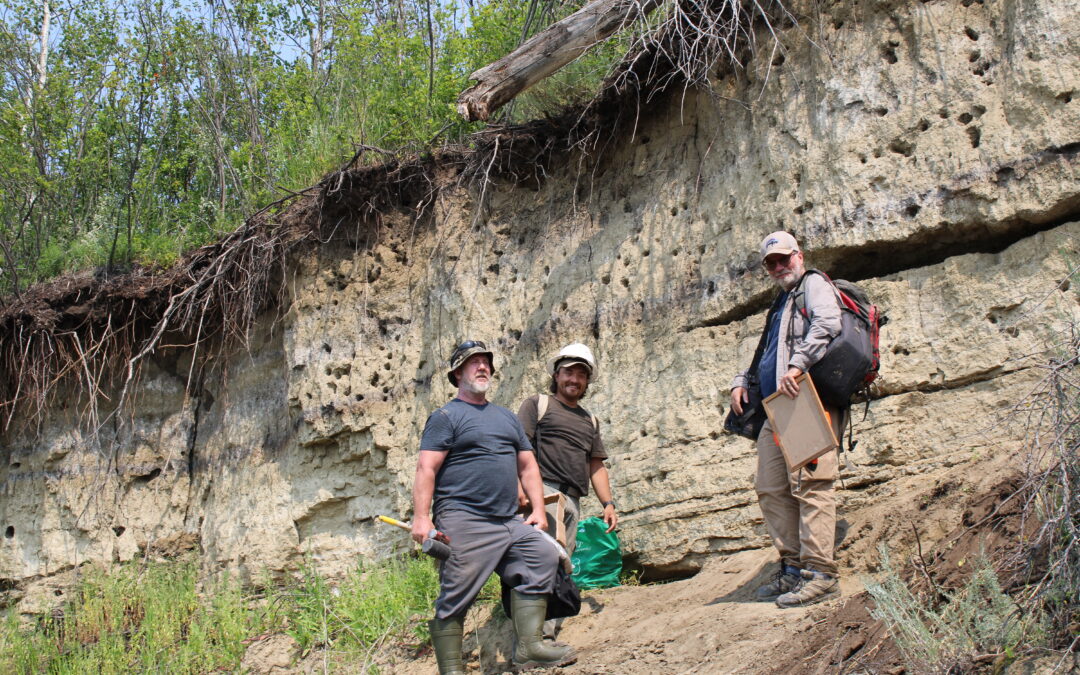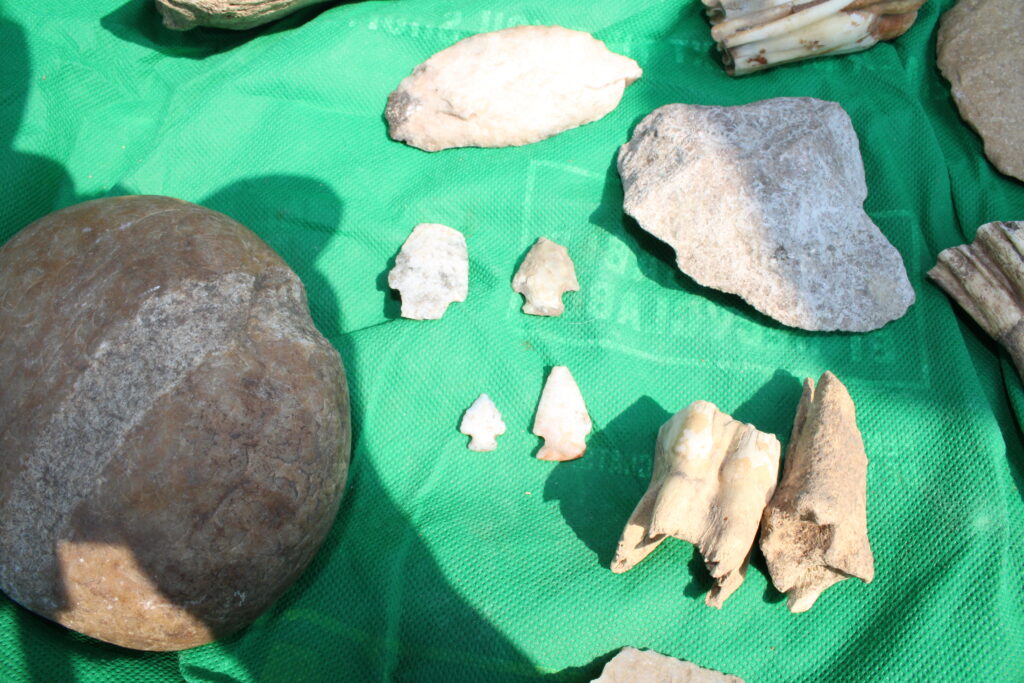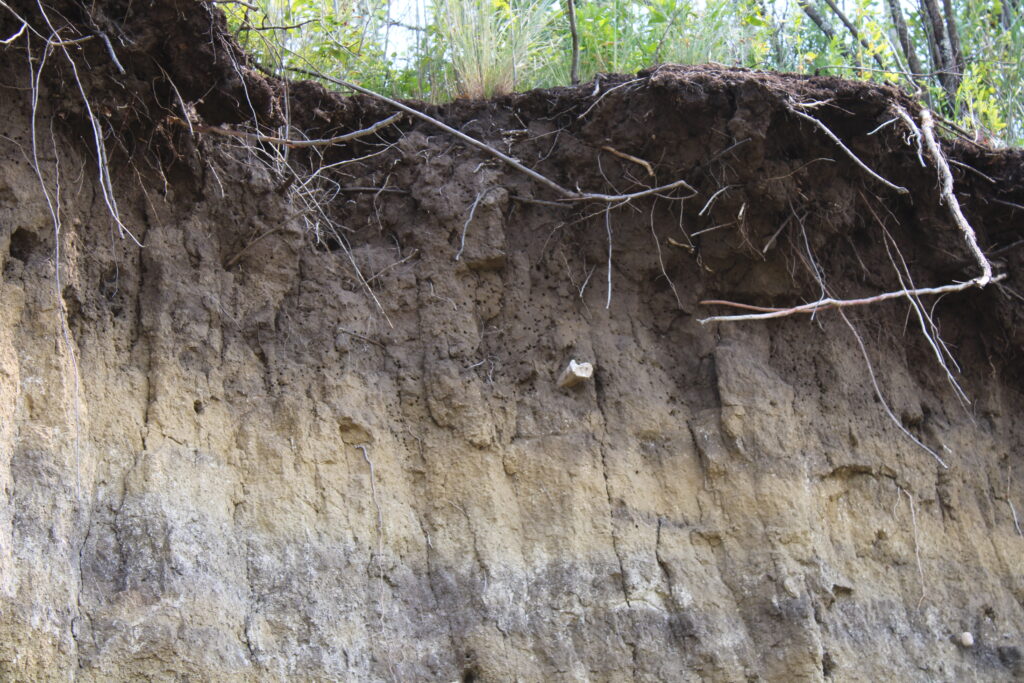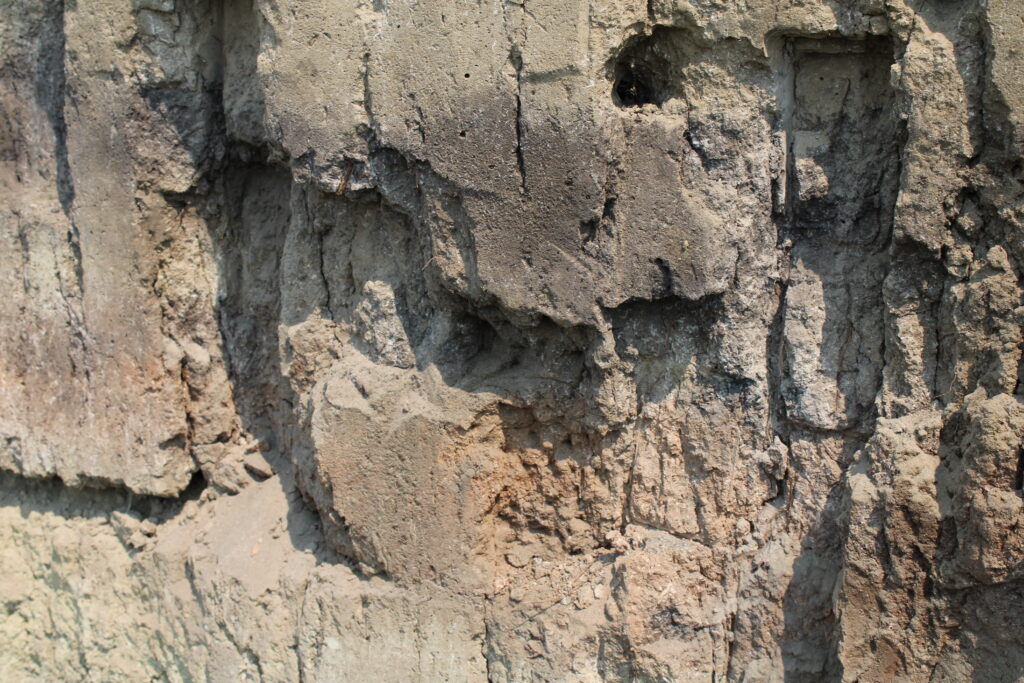On a hot summer July day, Dave Rondeau took MBC on a tour of the Âsowanânihk/Maynard research project site where ancient tools and bison bones were found and dated to be over 9,200 years old.
The North Saskatchewan River ice broke up a couple years back and it caused some property damages. That year the ice built up and it dragged along the riverbank, sometimes taking out fences and sometimes unveiling 10,000 years of stratigraphy in the cut bank.
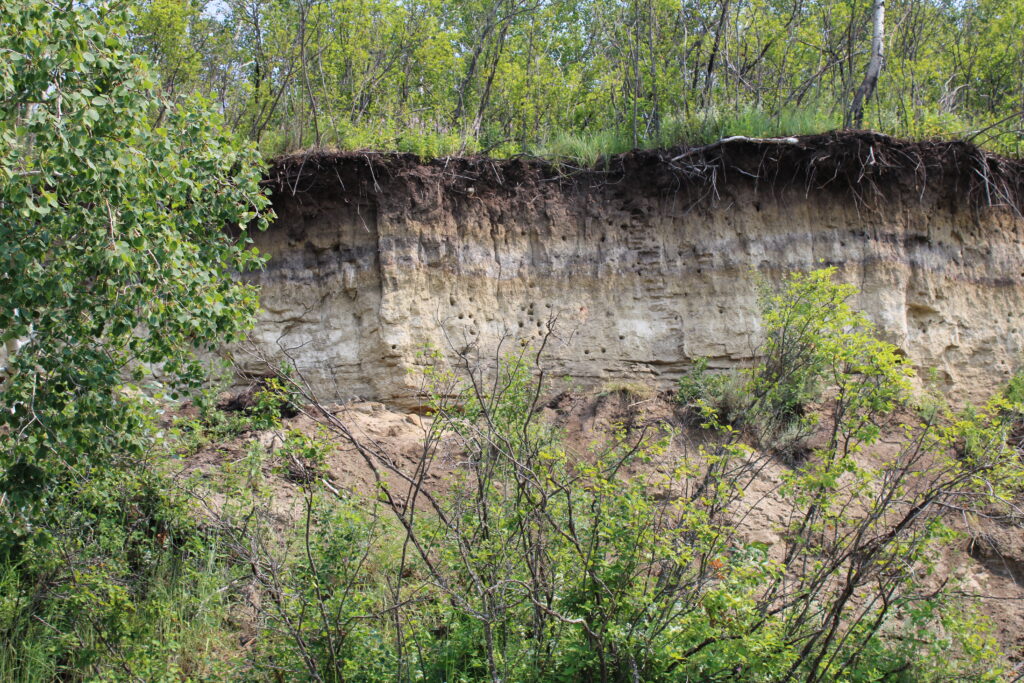
Photo: Researcher collected samples from the cut bank along the North Saskatchewan River at the Âsowanânihk/Maynard research project site by MBC.
Stratigraphy is a geological term that references the study of rock layers called strata and the layering of rocks called stratification. These layers help determine the sequences of events for a particular time in history.
Who knew the rivers spring breakup could be the key to unlocking the past?
Dave Rondeau a consultation coordinator for Crutwell Metis Local #66, and a local historian was excited to share his knowledge and take MBC on a tour upriver to the cut bank, which is now known as the Âsowanânihk/Maynard research project site. The site is located beside the North Saskatchewan River, and it would have been an ideal crossing location for animals such as bison.
Âsowanânihk, a Cree word meaning the “place of crossing.” This name was given by the Sturgeon Lake First Nation.
Photo: Tools and bison teeth collected from the shoreline at the Âsowanânihk/Maynard research project site by MBC.
The research project site has always been fruitful with indicators of early life, such as finding flake left behind from ancestors thousands of years ago. They were making tools to likely harvest bison after a hunt, but this is just a hypothesis. A flint knapping tool was also found on the site, which they are sending out for testing and analysis to determine age.
Flake, or flakes, are waste materials from the making of stone tools. Flakes have very sharp edges and a bulb of percussion where the stone was hit to chisel the tool. These flakes would be found in an area where people were making cutting tools or arrow heads. There were many flakes in the cut bank and on the ground at the research site.
Photo: This bison bone is an example of an artifact in situ in the cut bank of the North Saskatchewan River by MBC
While on the site tour, Rondeau stopped to discuss the preservation of the site and the artifacts observed.
“I’m not a collector; I don’t collect things; I take them; I make observations, and then I leave them behind always, but the reason I’ve gathered this stuff here though is because it pertains to this site, and then when the river comes up, we lose a lot of this stuff,” explained Rondeau.
It’s important to remember that removing artifacts from the ground is not an acceptable practice. It’s like ripping a page out of a book, you don’t get the full story about the artifact because it was not recorded in situ and properly analyzed. Remember observe with your eyes, document all applicable details and leave it in place. The one time it is okay to pick up an artifact is if you find the items have fallen out of the ground and are not in situ, these pieces will not be able to be analyzed and confirmed by a strata sample.
“Say this bone is stuck in the wall, and it has been there for thousands of years. It’s called in situ. Situ is Latin meaning in its original place, and then what we can do is take this (bone) and measure where it is in the stratigraphy and send it away for carbon dating, and then we know that layer is this old, but if this (bone) is laying on the ground, it’s not in situ and of very little use to us,” said Rondeau.
In situ is used when describing an artifact that has not been moved from its original resting place. Being in situ is important for identifying and interpreting an artifact and the circumstances under which it got to that area.
Rondeau was excited to see the excavation site where PhD Candidate Nicko Linares and Associate Professor Glenn Stewart were collecting samples from the cut bank to send for analysis.
At the site, there is a area of interest that looks to be where an historic fire burnt. The working hypothesis is that the fire was made by humans about 10,000 years ago. The samples they collected will help determine if the fire was human made and how old that strata is.
Photo: This is the point of interest where they suspect that is was the place of a historic fire by MBC
We know that people were here because we can see that in the paleosol are artifacts. Paleosols are visible in the cut bank and are the black layer of soil in the stratigraphy. They are ancient soils that record physical, biological, and chemical information about past conditions on Earth’s surface at a point in time, giving context to the artifacts. Once the samples are back with the resulting data, the researches will be able to piece together and create a story detailing what the area was used for.
The researchers are on a journey of collecting artifacts and soil samples, sending the samples out for analysis, and interpreting the results. Linares, with help from his university advisors and consultants, will have the honour of carrying that forward and helping to reveal what the ancestors were doing at the Âsowanânihk/Maynard research project site.
